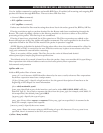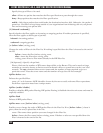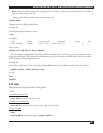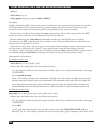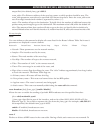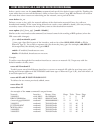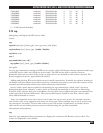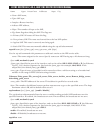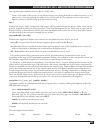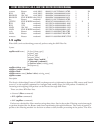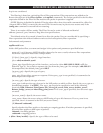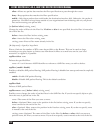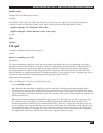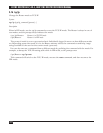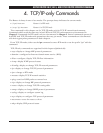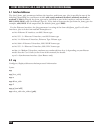
ASYNC ROUTER AR-P, AR-5, AND SYNC ROUTER REFERENCE MANUAL
207
The sap delete subcommand deletes a Service Table entry.
name—The name of the service to be deleted. If the entry being deleted was added by hand (i.e. is a
static entry), then any existing secondary entry will become the new primary entry to the service.
Specify name as an ASCII string up to 48 characters long.
sap -f
Flushes the Service Table. All dynamic SAP entries will be removed from the Service Table. Static entries
must be deleted explicitly by using sap delete. Note that flushing the Service Table does not turn off the
Router’s ability to learn about services. Over time the Router may re-learn all services that other routers
are advertising on the network, through the use of SAP.
sap roundrobin [{on | off}]
Without any arguments displays the status of the roundrobin feature, that is, on or off.
{on | off}—Controls Get Nearest Server responses generated from the Router.
on—Roundrobin on is useful when the client machine doesn’t care which available server is used, or
when it is desirable to distribute the workload over multiple servers.
off—Roundrobin off is useful when you want to limit which server is used.
You cannot assume that a particular server will be used when there are multiple servers in use,
regardless of the state of the roundrobin parameter. When a client desires to use one specific server, use
the NetWare preferred server option on your client to explicitly specify the server.
In NetWare, a client machine broadcasts a “Get Nearest Server” request, asking for the location of the
closest server of a particular type. Typically this is a file server, although any type of server supported by
Netware is possible. In the case that several servers are equally close (same number of hops and transport
time), the router may return any of the equally-close servers. The Router actually returns the server it
learned about first when there are multiple equally-close servers. Turning roundrobin on changes this,
so that the Router will return a different nearest server each time it is queried for nearest server and
there are equally-close servers. When there is one or more servers on the local net, the Router will not
return any information about the nearest server. The local servers themselves will respond.
sap update iface [/frame_type] [{enable | disable}]
sap update is similar to sap broadcast, with the exception that it controls sending SAP updates (when the
IPX SAP table changes).
iface—eth0, modem0-4, sync0
frame_type—Specified as part of the interface, and can be either 802.3, 802.2, SNAP, or II (for
Ethernet Type 2). Use a slash to separate the iface from the frame_type—for example, eth0/802.2. If
left unspecified, the default frame_type is 802.3.
enable—If enabled, broadcasts are sent.
disable—If disabled, broadcasts are not sent.
Examples
The sap output format follows:
Name Type Interface Address Hops Flags



